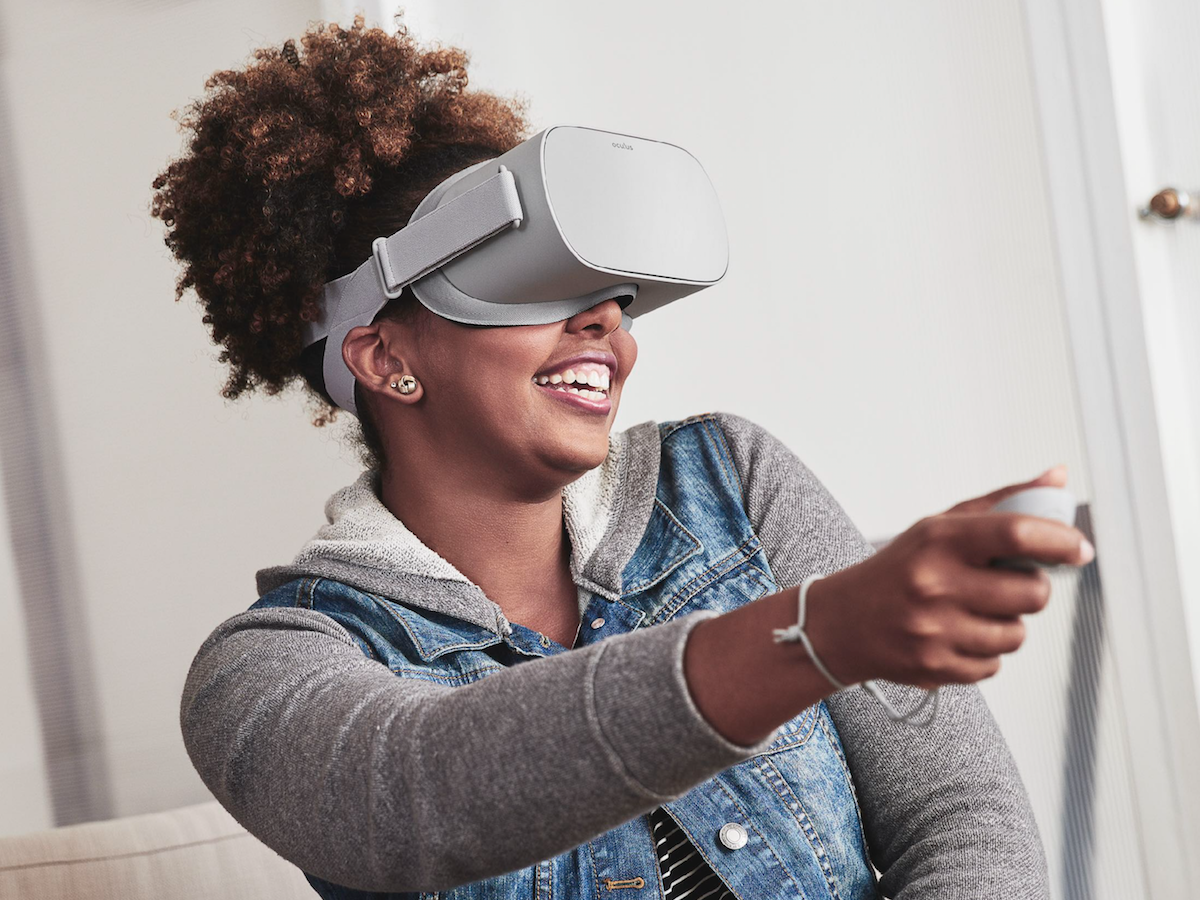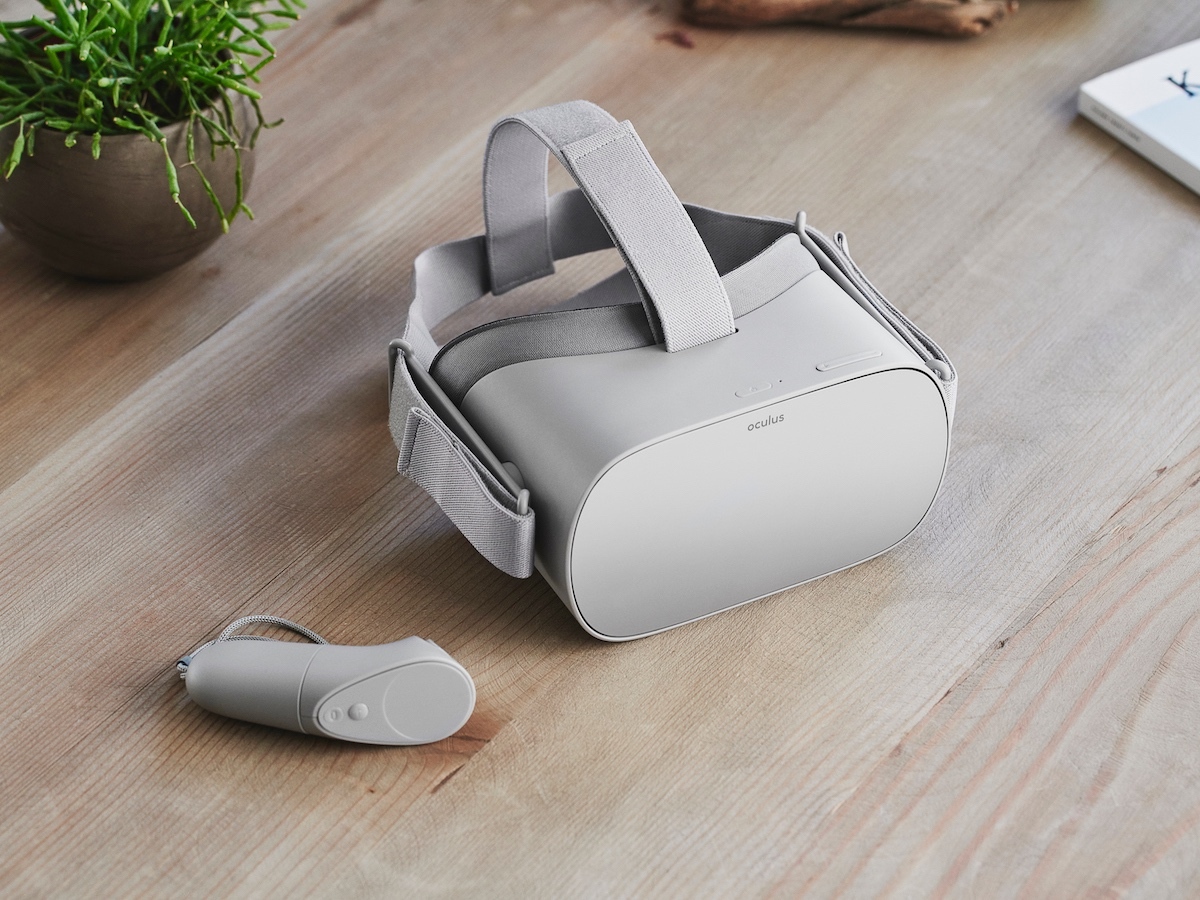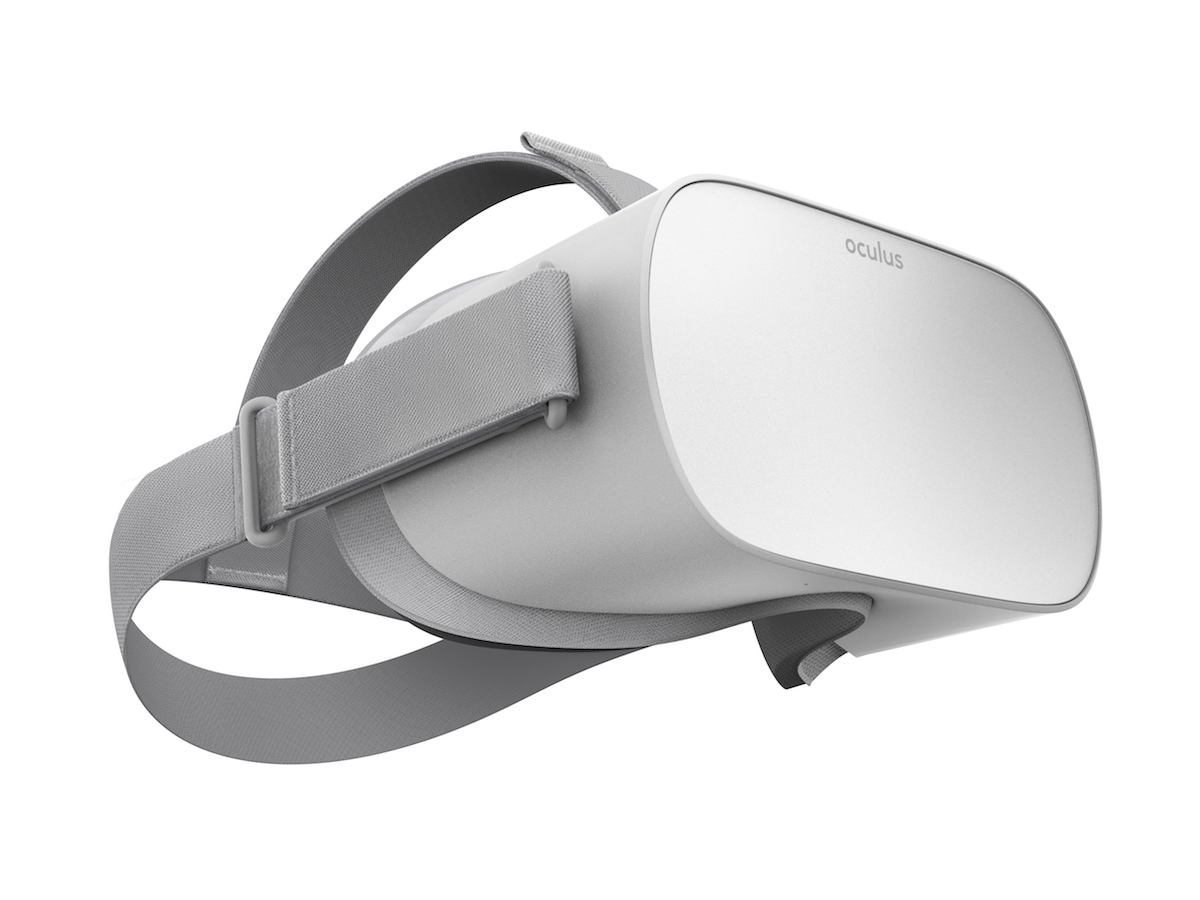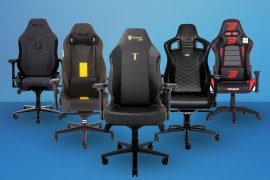Oculus Go: Everything we know so far
A cheap, standalone, powerful VR headset? Go on then...

Right now, if you want a reasonably strong virtual reality experience, you’ll need extra stuff beyond the headset: a powerful PC, a PlayStation 4, or a flagship-level smartphone.
But that’ll all change very soon with the release of Oculus Go. Unlike the Oculus Rift or the Oculus-powered Gear VR headset, you don’t need anything else besides the standalone headset. Oculus Go has its own screen, processing power, and battery, so you can play untethered and without the expense of a powerful secondary device.
And amazingly, they’ll sell it starting at US$199. How is that possible? We’re not entirely sure just yet, but we can’t wait to try it out. Plenty of official details have been released already, and it sounds like we’ll see the Go release before summer is in full swing.
If you’re looking for an affordable way to get into VR, the Oculus Go might be it. Here’s everything we know so far.
When will the Oculus Go be out?

Since it was first announced in October 2017, the Oculus Go has been pegged for an "early 2018" release window. Well, it’s early 2018 now. Where’s the Oculus Go?
Chances look good that we’ll see the headset release around the time of Facebook’s F8 conference. Variety reports that the Facebook-owned Oculus plans to launch the Go on 1 May at F8, although it’s unclear whether it will be available immediately or perhaps soon after.
Fact or fiction?
Launching at F8 makes a lot of sense, since the tech world always tunes in to see what Facebook is planning. Hopefully we don’t see a delay past the first half of the year.
How much will the Oculus Go cost?
We already have a price point for the Oculus Go, and it’s pretty surprising: Oculus plans to release the headset for US$199, which equates to about £142 at the time of writing.
That’s significantly cheaper than a Gear VR headset with a comparably-equipped smartphone, for example, let alone a PlayStation VR with a PS4 or an Oculus Rift or HTC Vive with a high-end PC.
Note that the price will "start at $199," and while that phrasing might suggest a low-end and a high-end version of the headset, Variety suggests that it’ll just be a difference in storage. The entry-level model should offer a modest 32GB of storage, while a 64GB version will cost a bit more.
Fact or fiction?
Oculus can’t back down from that $199 promise now! It’s arguably the biggest feature of this headset, given the all-in price compared to other VR options. We’ll just have to see whether the pricier version really is the same aside from storage.
What will the Oculus Go look like?

The Oculus Go seems to find the middle ground between the Rift and Google’s Daydream View: it has the silhouette of the Rift, but it looks more compact, won’t have any wires hanging off of it, and has more fabric in the mix.
Oculus promises that it uses "breathable fabrics" to help keep you from breaking out in a sweat while zapping zombies or exploring the stars, and the adjustable straps look like they’ll do a fine job of keeping the headset on your face without shifting around.
Meanwhile, the included one-handed wireless controller is a fair bit like the Gear VR one, with a big, clickable touchpad below your thumb, a nicely-sized trigger to click below, and a couple of smaller buttons for navigation. It’s a little chunkier than the Gear VR’s, but seems very similar in overall usage.
Fact or fiction?
There’s nothing to dispute here about the look: we’ve seen plenty of official photos. We’ll have to wait and see how comfortable it is, though – the Rift is pretty comfortable, as is the Gear VR. The Daydream View isn’t quite as nice to wear, although the Oculus Go’s straps make it seem like it’ll fit more like the Rift and Gear VR.
What about the Oculus Go’s screen?
Given the US$199 price, you might expect something low-end from the Oculus Go – a 1080p panel, perhaps. But amazingly, Oculus says that there will be a Quad HD display within, just like the those seen on Samsung’ Galaxy flagships and Google’s Pixel XL phones.
Well, not exactly like those – it’ll be an LCD panel instead of a richer OLED display. But it’ll be a "fast-switching" LCD panel, according to Oculus, with a speedy refresh rate to help keep you away from queasiness while using it. And Quad HD (1440p) resolution is super important, since clarity makes a huge difference in VR enjoyment.
Fact or fiction?
We don’t know yet if it’ll be quite as amazing of a screen as those on today’s top flagships, but with 1440p resolution and a fast refresh rate, it ought to be good enough to get the job done.
What kind of hardware will the Oculus Go pack?

Obviously, given the price, the Oculus Go doesn’t pack in the same kind of flagship-level hardware that we’re seeing in the Samsung Galaxy S9 or Google Pixel 2 XL – but it’s not too far off from those newer chips, surprisingly.
Instead, the Oculus Go will use the Qualcomm Snapdragon 821, which was used in the original Google Pixel and the LG G6. That’s a surprisingly powerful chip for a headset this cheap, and it ensures that Gear VR-level experiences should run very well on it.
We don’t know yet about how much RAM it has in store, but we doubt Oculus would go low on that tally and cripple the experience.
Xiaomi is building the Go alongside their nearly-identical Mi VR Standalone, and Oculus promises their "best lenses yet" and "crystal-clear optics" in the mix, plus it’ll have built-in spatial audio to create more immersive experiences.
What the Go won’t have, however, is any sort of external tracking. Like the Gear VR and Daydream, you won’t be able to walk freely through your room to move in the VR world. However, the controller’s motion sensors do allow for a fair bit of interactivity.
Fact or fiction?
The Snapdragon 821 is a plenty powerful chip for mobile VR-level experiences like those coming to the Oculus Go, so you should see pretty smooth 3D graphics without much slowdown or overheating issues.
What kind of apps will the Oculus Go have?
Gear VR apps – it’ll have all of the Gear VR apps. And that’s a very good thing.
Why? Because Oculus already has 1,000+ apps and games on the Oculus store that are compatible with the Gear VR, and as we’ve explored, there’s a lot of strong content worth checking out. Games like Smash Hit and Minecraft are worth playing, there’s Netflix and 360-degree video apps, and plenty of other things to try. And a lot of it is free.
Oculus helped build this library for Samsung’s hardware, and now will reap the benefits by producing a comparably-equipped standalone headset. Smart move.
Fact or fiction?
It’s hard to argue with that approach: we already have lots of Gear VR favourites, and the entire library will also be playable on the Oculus Go – including controller-based games. These experiences aren’t as rich as what you’ll find on the PC with the Rift and HTC Vive, but given the price point and hardware capabilities, we’re likely to be pretty happy with the selection.
Correction: 21 March 2018
We incorrectly listed Huawei as the Oculus Go’s manufacturer – this has been amended to the correct hardware partner Xiaomi



